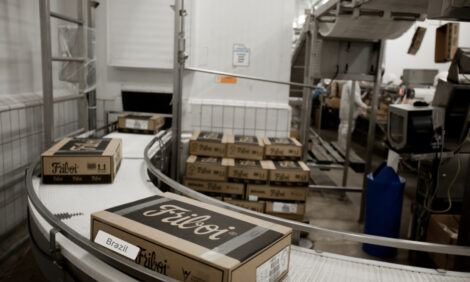



All Must Seize Policy Window of Opportunity, Says NFUS
UK - Scotland’s agricultural industry and politicians in Holyrood and Westminster must seize a brief opportunity to make the most of the EU’s recent Common Agricultural Policy (CAP) deal for the good of Scottish farming and crofting, says NFU Scotland (NFUS).NFUS office bearers and staff spent the week briefing cross-party MSPs and ministers on the Union’s proposals to ensure the CAP regulations and limited budget can be made to work to best effect ahead of a Scottish Parliament debate today (Thursday, 3 October) on the EU’s CAP regulations and budget.
NFUS is insistent that Scotland’s limited Pillar 1 budget (direct payments) be targeted effectively; that Scotland be ‘regionalised’ sensibly ahead of the move to area payments; that the Scottish Government announce soon how it intends to move from the current, historic-based system to an area-based one; and that the Scottish Government also commit to limit modulation from Pillar 1 to Pillar 2 to 4 per cent.
Speaking after the meetings, NFU Scotland’s President, Nigel Miller said: "Scotland’s agricultural support system is about to change significantly, and farmers and crofters need to know soon - in so far as is possible - how this is likely to affect them. The new CAP will come into being in fifteen months’ time and there is a great deal to be done to determine how it will be implemented and to put the right systems in place to guarantee the transition happens as smoothly as possible.
"Budget issues still have to be settled between the UK and Scottish Government, and NFUS is urging both parties to arrange an equitable deal which will see farmers undertaking similar activities on similar land types receive similar levels of funding, no matter where they are in the UK.
"We know that money is tight and is likely to become even tighter, so we shall have to be smart about how we direct it; this means steering direct support towards productive land while determining a sufficient level of coupled payment to livestock producers, especially those on less productive land, in order to prevent de-stocking.
"The fact that individual farms can contain land of greatly differing quality means this will be a difficult task, but it is one we must get right. Whatever happens, we must protect Pillar 1, which will come under a great deal of pressure from national reserve and young farmers’ top-up commitments. In order to help preserve flexibility and Pillar 1 funds, we have two options which we must utilise; the first is to calculate our coupled budget according to the UK ceiling, rather than Scotland’s own, which would give Scotland a greater pot of money for coupling; the second is to minimise the transfer of funds, or ‘modulation’ from Pillar 1 to Pillar 2 to 4 per cent.
"Whatever level the Scottish Government chooses to modulate, it must also commit to match-fund Pillar 2 schemes i.e. the SRDP and, most importantly, LFASS, and ensure that rural development schemes are practical and accessible to all farmers and crofters.
"The fears surrounding greening arrangements for Pillar 1 are still causing a great deal of concern, especially among arable producers. NFUS is working hard on developing ‘equivalent’ greening measures which will permit farmers to continue production without unmanageable regulatory constraints but in a way that still meets the EU’s desired outcomes."
TheCattleSite News Desk


